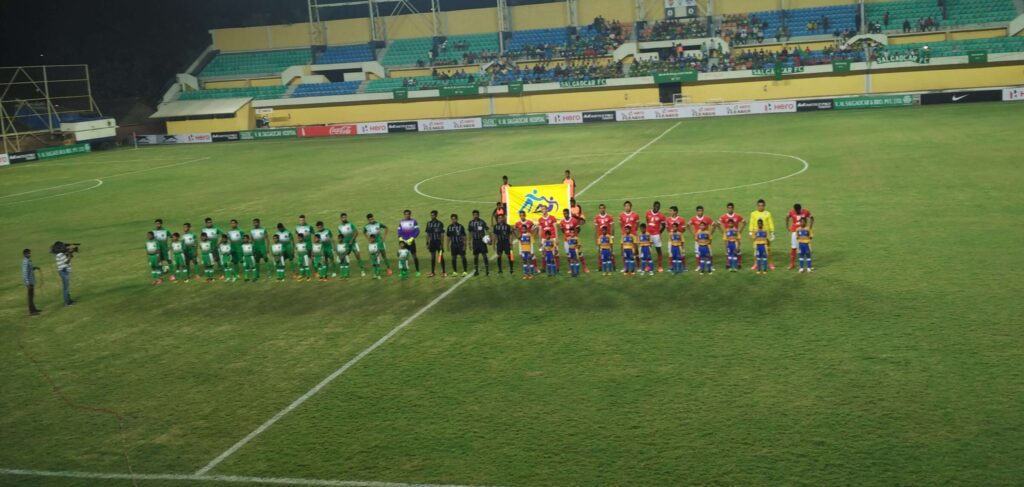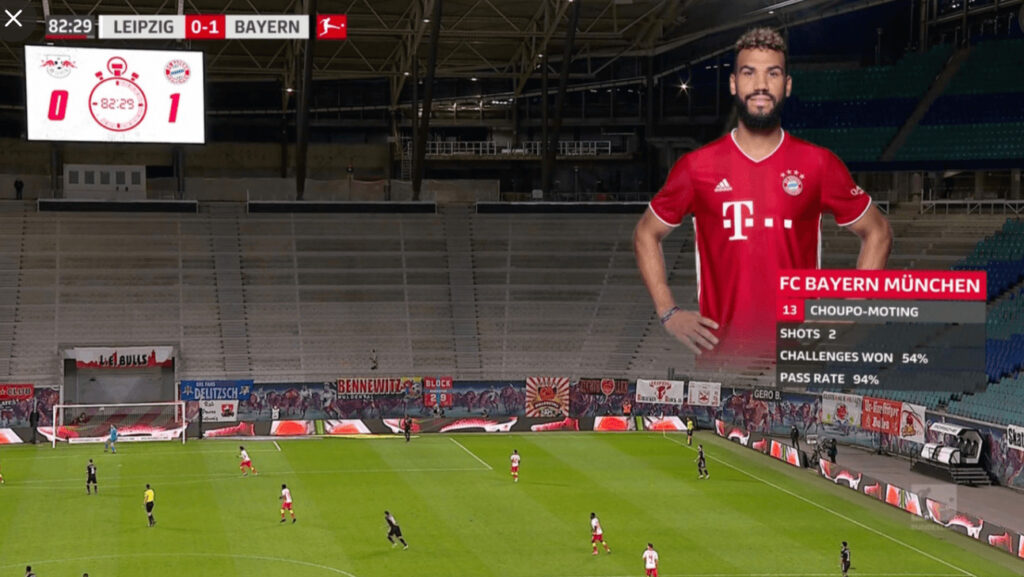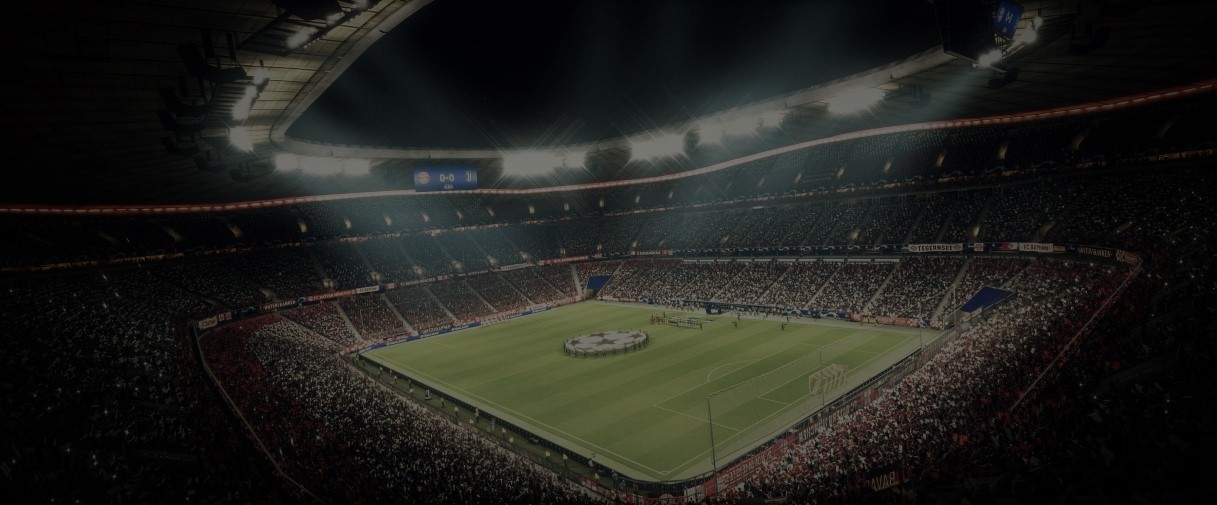In lieu of the outrage surrounding the genesis (and subsequent demise) of the European Super League, this story is the first of a two-part series that explores the aestheticization of football through media, increasing globalisation and corporate investment. The second part will detail the inertia that has held national football leagues in India from receiving ‘eyeballs’, quite literally.
On April 20th 2021, as the English Premier League’s match between London clubs Arsenal and Fulham kicked off atop the lush lawns of the Emirates Stadium, news broke across international media: 12 football clubs from England, Italy and Spain, had come together to partake in a new “European Super League”, side-stepping Europe’s governing body UEFA and their Champions League. Arsenal was one of the “Big Six” from England.
The 48 hours that followed saw an extraordinary coming together of the global footballing community to decry the formation of this elite breakaway league. The flood of articles, fan posts, and players critical of the ESL eventually forced the founding clubs to withdraw their plans and issue public statements of apology.
But why was the European Super League being condemned?
Critics of the ESL adopt one of the following perspectives on the matter.
One line of argument invokes the ethics of fair play in football. The ESL creates a ‘closed’ model of competition that disregards values of sporting merit via promotions and relegations as far as the founding clubs go. Although there has been an opacity in the functioning of the UEFA, the ESL’s completely independent regulatory structure reposed little faith amongst fans.
The collapse of the European Super League wasn’t the end of something it was the start. Fans are determined and mobilised. This is our game. Not the billionaires who think they can treat us like ‘customers’ and our clubs as ‘assets’
— Breakthrough Party 🟠⬆️ (@BThroughParty) April 23, 2021
The second line of argument is a legal and logistical one. Practical concerns about the disbanding of ESL clubs’ women’s teams, preparing match venues, ticket-pricing, player bans, fixture congestion, and player fatigue questioned the feasibility of creating such a breakaway league. The fact that football leagues affect multiple industries and calendars is evident in the politicians (including Britain’s Prime Minister Boris Johnson) coming out in criticism of the League.
Plans for a European Super League would be very damaging for football and we support football authorities in taking action.
They would strike at the heart of the domestic game, and will concern fans across the country. (1/2)
— Boris Johnson (@BorisJohnson) April 18, 2021
The third and most popular disapproval for the ESL came against the destabilizing impact it would have on the countries’ grassroots footballing ecosystem, at a time when the pandemic has already started forcing lower division football clubs to shut shop. The ESL, it has been argued, threatens to collapse the overall financial structure of domestic football in the selfish interest of securing the fortunes of 12 “Super Clubs”.
While all three perspectives offer relevant and strong arguments to consider, they share a common inevitable weakness. Be it the moral, legal or structural, each criticism of the concept of a European Super League preaches a scenario of impending doom and a sporting crisis waiting to break loose in the near future.
In other words, the ESL would be a “cause” that will offset a series of dangerous effects on football as we know it.
What’s missing from our criticism of the ESL?
The European Super League isn’t a problem child “for the future”, as many look at it. Rather, it is the culmination of a crisis in football that has been growing with every corporate takeover of leagues across the world, not just Europe.
To understand this, let us for a second think about the televisual aesthetics, or our viewing experience of live football, instead of ‘hard’ quantitative facts and figures. By no means do I intend on moving you away from the play of real physical bodies or the materiality of organized sport. In fact, delving into images allows us to formally recognize the elements that create the visual look and architectural design of football clubs as we know it. Images, then, become as much about the kinetic flow of team formations, the smoothness of the grass, the symmetry of athletic bodies and the texture of their movement, as it is about high-grade and mobile camera equipment, and the seamless ways in which images are edited, composed and organized to convey a contemporary notion of ‘quality’ in football.
Such a notion of ‘quality football’ began in the 1990s, parallel to the processes of globalisation and corporatisation of football clubs. At stake in this new corporate drive was an attempt to reshape football’s image, to ‘rescue’ the coverage of the sport from its association with hooliganism, violence, and working-class supporters.
Through an intense makeover period – where stadiums were gentrified, clubs were made consumable global brands, and footballers emerged as media stars – the corporatised repositioning of football allowed the game to purchase a new aesthetic look. Through a wide variety of intersections with film, gaming, fashion and pop music industries, top division teams reconfigured the image and vocabulary of football to tend to a new dedicated group of corporate-friendly globalised audiences.
Television Shaped Football As We Know It
Not just in financial terms, but aesthetically as well, private television fundamentally shaped the development of most sports across the world. Football’s intersection with television has proven to be the most important factor in cultivating the sport and its players’ newly furnished look. From official merchandise to television features, elite football clubs came to possess a slick and glossy interface that flowed throughout their entire brand. These legacy clubs with rooted local histories and identities architecturally underwent a process of becoming ‘non-places’, as Marc Auge has described in a different context. You may have come across similarly used terms such as ‘McDonald-isation’, ‘standardisation’, and ‘empty signifiers’ in other industries, all of which can be used to describe the corporate construction of these globalized European clubs’ televisual images.
Sky Sports’ acquisition of the English league in the early 1990s allowed the design and presentation of commercial broadcasts to shine much brighter than other leagues in Europe. As many fans have recently pointed out, the grass is quite literally greener in the English Premier League!
Our Partners are getting great exposure this season in the Premier League despite the games being behind closed doors currently.
Here are a few recent examples from recent games broadcast live on BT Sport & Sky Sports. #LUFC #MOT #branding pic.twitter.com/S1NDhIEnHp
— Leeds United Business Club (@lufcbc) October 23, 2020
More than its millionaire owners, these attractive television images have come to define the fortunes of English football both at home and across Asia, the Middle East and the US. The overall vibrant compositions, colourful graphics, energetic British commentators, and pacy editing practices became crucial hallmarks of the new corporatised regime of football.
Meanwhile in Turkey pic.twitter.com/NqOrmyTr88
— The Dalaman (@thedalaman) August 28, 2018
“Lots of studies have shown that consumers like natural-looking images. So this suggests that there may be a limit to how colourful we can make the images before people would reject them as being unnatural”, says Stephen Westland, a Professor of Colour Science at the University of Leeds about the English Premier League’s televisual aesthetic.
In contrast to the fresh corporate design that was filtering the notion of ‘quality’ in football during the 90s, Doordarshan’s production of the National Football League (later known as the I-league) was starved of precisely this visual grammar of globalised spectacle. Among other things then, it was a poverty of the football image that turned the younger generation of football fans in India away from the local leagues and towards their more dynamic European counterparts.

This new televisual presentation of football also influenced how the game was played on the field. Although perhaps more subtly than the arrival of T-20 in cricket, certain forms of play came to be viewed as “desirable” for elite football clubs. The polished images of elite clubs needed to be replicated in a style and manner of play on the pitch. Playing styles like Pep Guardiola’s “Tiki-Taka” or Jurgen Klopp’s “Gegenpressing” which demand constant movement off the ball, possession-based gameplay, ball-playing defenders and goalkeepers, and a slick interplay of passes, matched the elements created by what is now a globalised spectacle full of shiny textures. This new television-induced definition of attractive football has changed the sport itself.
You May Also Like: A Palette of Perspectives for Indian Football’s Canvas
Over the last two decades, as globalised European football clubs have purchased a greater currency of spectacle and gloss, the UEFA Champions League has started to appear like a homogenous enterprise. Besides the format having stayed the same for decades, it is the televisual form and aesthetics of the game that make the Champions League matches seem routine. Just the intro to the Champions League anthem triggers flutters in fans’ hearts.

What do we stand to lose with this new televisual aesthetic?
Think about the teams that possess a different geometry of sports: those that go into a match trying hard not to lose, instead of expecting to win? Teams that more often than not remain static, narrow configurations boxed in their defensive half? In most football leagues across the world, mid-tier and lower-division teams possess a different political and cultural economy of football. They embody a football that is grainy, glitchy, and understated; yet, it is a brutishly persistent approach on and off the pitch. These characteristics allow such clubs to adopt a different aesthetic enterprise when playing. They have a structure, but it is one that cannot be rigorously programmed to fit a set formula.
If representatives of elite football adopt aesthetic principles of play that are best suited to their brand identity, then the mid and lower-division clubs’ lack of a well-defined and branded televisual product allows them to remain more susceptible to arbitrary, spontaneous and dynamic rhythms of play. Their success is equally spontaneous, if Wigan Athletic beating Manchester City in 2013 to lift the FA Cup is anything to go by. For context, 2012-13 was also the same season in which they got relegated from the English Premier League.
Every National League Should Be Weary
In the glittering framework of the top footballing divisions of the world, there is a sheer lack of diverse and dynamic configurations of play staring at us. The ESL, in this regard, is only the latest instalment in making football a repetitive, formulaic, and homogenous enterprise that flattens the game towards a singular aesthetic outlook. It may never be any more than a mere footnote in football’s broader history. Still, if nothing else, it is a stark reminder of the corporate movement that gradually empties the radical charge of football.
Indian football fans have an example of this corporate movement lying in their own backyards, in the form of the Reliance-owned Indian Super League. Less than a decade old, it brought Bollywood, a heady set of investors, and a sheen that Indian football had never seen before; yet, it came at the cost of demoting the I-League to being the second division, where 11 promising football clubs ply their trade. As of now, franchisees are fixed in the ISL, and teams cannot get relegated to the I-League even when they perform badly. Club football may be irreparably damaged if the AIFF does not ensure that the proposed promotion of I-League teams by the 2024-25 season comes through.
Things move fast in the world of sport. When it comes to the European Super League, the consensus seems to be that the crisis has been averted. However, the spectre of a new footballing formation (which, for now, is represented by the ESL) is here to stay. That is, of course, if it isn’t already dominating our screens. In order to truly upset the corporate dynasties that run football across the world, one has to challenge the silky images of the beautiful game that crowd our current imaginations, making other more radical possibilities of the game redundant in the process.
Featured image: A still from EA Sports’ FIFA 19 gameplay bears an identical aesthetic to the television broadcast of the UEFA Champions League.
Watch out for part two of this series, where we look at how Indian football’s televisual identity has been created.






